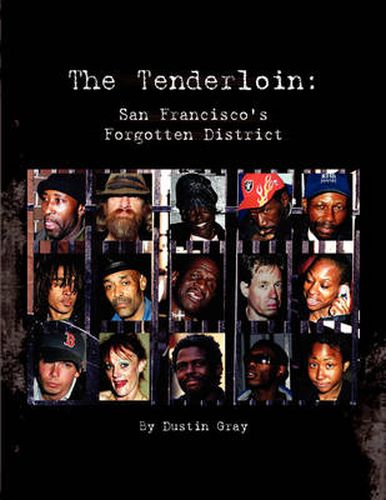Readings Newsletter
Become a Readings Member to make your shopping experience even easier.
Sign in or sign up for free!
You’re not far away from qualifying for FREE standard shipping within Australia
You’ve qualified for FREE standard shipping within Australia
The cart is loading…






This title is printed to order. This book may have been self-published. If so, we cannot guarantee the quality of the content. In the main most books will have gone through the editing process however some may not. We therefore suggest that you be aware of this before ordering this book. If in doubt check either the author or publisher’s details as we are unable to accept any returns unless they are faulty. Please contact us if you have any questions.
When I moved into the Tenderloin district of San Francisco, almost immediately I noticed the epidemic of homelessness that seemed to blanket the entire neighborhood. Even more prevalent was the problem of drug abuse and alcoholism. It would truly be safe to say that 70-80% of the neighborhoods occupants fall into this category. In my experience, San Francisco has the largest number of homeless people as compared to other cities I have visited. I do realize there are locales such as Detroit, Chicago, and New York that have equal if not larger problems with homelessness, but since San Francisco is where I call home, it will be the focus of this project. People in the Tenderloin were pushing everything from street drugs like heroin and cocaine, to prescription pills like oxy cotin and vicodin. There was almost no reaction to these activities by the local police, except perhaps to unjustly harass individuals that didn’t necessarily deserve it. It was almost as if the city created a way to deal with the problem by sectioning off the Tenderloin district for the outcasts of society to thrive in. As long as they stayed out of the wealthy areas, there would be no need for the local government to intervene or develop a long term solution. These are the premises that inspired me. So in the spring of 2006 I walked the streets of the Tenderloin day and night so as I could capture the essence of the area in the most realistic way. All images were shot with a 35 mm film camera. My intention in creating this book is one of enlightenment, so that people of all backgrounds could see the completely ignored deterioration of nearly a dozen city blocks… Streets entirely cluttered with despair placed conveniently within a stones throw of the streets where wealthy tourists shop for thousand dollar handbags and five dollar coffees.
$9.00 standard shipping within Australia
FREE standard shipping within Australia for orders over $100.00
Express & International shipping calculated at checkout
This title is printed to order. This book may have been self-published. If so, we cannot guarantee the quality of the content. In the main most books will have gone through the editing process however some may not. We therefore suggest that you be aware of this before ordering this book. If in doubt check either the author or publisher’s details as we are unable to accept any returns unless they are faulty. Please contact us if you have any questions.
When I moved into the Tenderloin district of San Francisco, almost immediately I noticed the epidemic of homelessness that seemed to blanket the entire neighborhood. Even more prevalent was the problem of drug abuse and alcoholism. It would truly be safe to say that 70-80% of the neighborhoods occupants fall into this category. In my experience, San Francisco has the largest number of homeless people as compared to other cities I have visited. I do realize there are locales such as Detroit, Chicago, and New York that have equal if not larger problems with homelessness, but since San Francisco is where I call home, it will be the focus of this project. People in the Tenderloin were pushing everything from street drugs like heroin and cocaine, to prescription pills like oxy cotin and vicodin. There was almost no reaction to these activities by the local police, except perhaps to unjustly harass individuals that didn’t necessarily deserve it. It was almost as if the city created a way to deal with the problem by sectioning off the Tenderloin district for the outcasts of society to thrive in. As long as they stayed out of the wealthy areas, there would be no need for the local government to intervene or develop a long term solution. These are the premises that inspired me. So in the spring of 2006 I walked the streets of the Tenderloin day and night so as I could capture the essence of the area in the most realistic way. All images were shot with a 35 mm film camera. My intention in creating this book is one of enlightenment, so that people of all backgrounds could see the completely ignored deterioration of nearly a dozen city blocks… Streets entirely cluttered with despair placed conveniently within a stones throw of the streets where wealthy tourists shop for thousand dollar handbags and five dollar coffees.